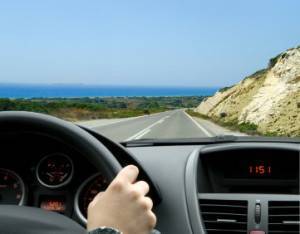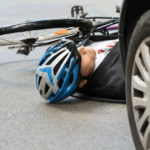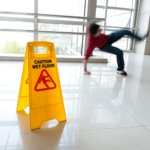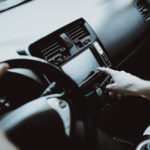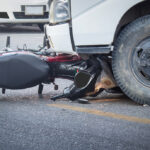- In accidents
In general, the safest seat in a car is considered to be the rear middle seat. That is, of course, assuming that the passenger is wearing their seat belt in case of a collision. Additionally, the middle rear seat is considered much safer if the passenger has a shoulder and lap belt as opposed to just a lap belt, as some older vehicles may have. But choosing to ride as a passenger in the rear middle seat may be socially uncouth when there is no one besides the driver in the vehicle. When the read middle seat isn’t available or is uncomfortable given the circumstances, a passenger may want to think about the second safest seat in the car. Remember that many factors can change which is safest, like if the passenger is a small child or which options are available in the vehicle.
Front Seat
It’s difficult to pick a seat in the front row of a vehicle based on safety- someone either has to be the driver or the passenger. Being a passenger in the front seat can be safer than being a passenger in the rear seat in a rear-end collision. Additionally, this is usually the seat that is polite to choose if someone else is driving and there are no other passengers.
Back Seat
As mentioned above, the middle rear seat is generally the safest in a vehicle. If someone wants to choose a seat in the back seat that isn’t the middle, they might want to choose the seat behind the driver. At a four-way intersection, a driver may turn left and be hit by a driver coming from the opposite direction. It is much more difficult for a driver making a right turn to be hit by another driver in the same way, especially at high speed. Therefore, sitting behind the driver in the back seat can at least slightly reduce the risk of injury in a traffic collision. Additionally, the driver is instinctually prone to protect their side of the vehicle, so siding on the left can be beneficial.
Things A Passenger Can Do In A Vehicle For Safer Driving Conditions
Ultimately, a passenger doesn’t have nearly as much control over safety and the outcome of an accident when compared to the driver. However, some of the ways a passenger can keep the vehicle safer for everyone in the car include:
- Staying buckled up – It’s not just the passenger’s own safety in their hands. If someone is unbuckled during a collision, they could collide with others in the vehicle and cause further injury or even be ejected from the vehicle.
- Avoiding distracting the driver – Pranking the driver, pointing out sights and signs, starting emotionally tense conversations, and more can all distract a driver and make them less safe behind the wheel. These distractions can wait until the vehicle arrives at its intended destination.
- Playing navigator and DJ – Driving a vehicle filled with passengers can be stressful enough without factoring in working GPS navigation, choosing the music, and operating other dashboard controls. Someone sitting in the front passenger seat can easily handle many of these tasks to keep the driver focused on the road.
- Refusing to get in the car with a drunk driver – Most people who consume alcoholic beverages have faced the decision between risking the drive home or playing it safe and catching a ride. Even if the person was supposed to be the designated driver, a passenger should never get in a vehicle with an intoxicated driver. Refusing to ride with an intoxicated driver could create pressure to keep them from driving, which makes the road safer for everyone.
Injured in a car accident? Experienced car accident attorneys at the Law Offices of Samer Habbas & Associates can clarify your legal options. To schedule your initial case consultation, call 888-848-5084 or visit our website today.
Recent Post
-
April 15, 2024
-
April 12, 2024
-
April 9, 2024
-
April 8, 2024
-
April 8, 2024





